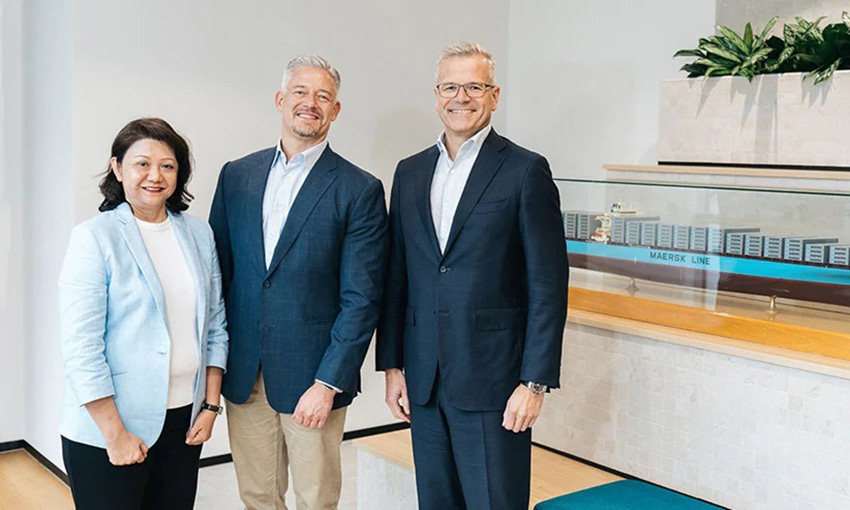MAERSK plans to invest more than US$500 million to expand its supply chain infrastructure to support South East Asia as a global production hub.
Maersk’s planned three-year investment will target its Logistics & Services arm, but a “substantial amount” of investment will also be channelled into its Ocean and Terminals infrastructure.
The investment is expected to create job opportunities for local talents on top of automation efficiencies and scale the company’s existing network footprint in the region.
“South East Asia is the fastest growing area in Asia Pacific,” Maersk CEO Vincent Clerc said.
“A digitally savvy population, coupled with an e-commerce boom, government’s efforts to capitalise on global manufacturing diversification, growing regional brands, and rising inter-regional trade is spurring sustained growth in this area,” he said.
“Our investment reflects the commitment to being the global logistics integrator addressing the changing needs of our customers, now and in the future while remaining steadfast to our decarbonisation agenda.”
The investment was announced on the sidelines of a recently concluded global executive board meeting in Singapore.
It aims to build supply chain resilience, lower the cost of trade, which tends to be two-to-three-times higher in certain Asian markets.
Maersk plans to invest in scaling its warehousing and distribution footprint by up to 50% across the area to augment its ocean, air and land capabilities, serving both international and domestic markets and demand.
By 2026, Maersk expects to add nearly 480,000 sqm capacity spread across Malaysia, Indonesia, Singapore, and the Philippines.
Maersk is also investing in increasing its landside warehouse capacity at Singapore’s Changi Airport, with the aim of solidifying its position as Maersk’s regional air freight hub.
On the landside, Maersk plans to invest in increasing its haulage truck capacity in South East Asia. It will also pilot biodiesel-based haulage trucks and introduce EV trucks by 2024.
And on the ocean and terminal front, Maersk plans to expand its infrastructure across the region through APM Terminals, to support enhanced ocean network design and bring additional transhipment to the region.
The company is also working with authorities in the region to explore opportunities in building green fuel infrastructure to support its future green vessel fleet.
“Our investments in South East Asia aim to deliver a truly end-to-end supply chain and logistics solution to our customers, offering them greater visibility and control,” Maersk’s area managing director, South East Asia Elaine Low said.
“Customers will have the flexibility to choose different transport models, omnichannel-fulfilment services and their preference for eco-friendly supply chain solutions depending on their sustainability goals.”
Maersk has a presence in Singapore, Malaysia, Indonesia and the Philippines.





